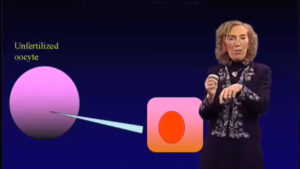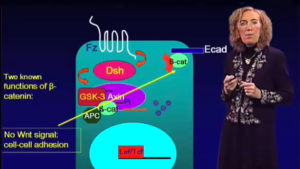Talk Overview
During embryogenesis, a single fertilized oocyte gives rise to a multicellular organism whose cells and tissues have adopted differentiated characteristics or fates to perform the specified functions of each organ of the body. As embryos develop, cells that have acquired their particular fate proliferate, enabling tissues and organs to grow. Even after an animal is fully grown, however, many tissues and organs maintain a process known as homeostasis, where as cells die, either by natural death or by injury, they are replenished. This remarkable feature has ancient origins, dating back to the most primitive animals, such as sponges and hydrozoans. The fabulous ability of an embryo to diversify and of certain adult tissues to regenerate throughout life is a direct result of stem cells, nature’s gift to multicellular organisms.
Stem cells have both the capacity to self-renew, that is, to divide and create additional stem cells, and also to differentiate along a specified molecular pathway. Embryonic stem cells are very nearly totipotent, reserving the elite privileges of choosing among most if not all of the differentiation pathways that specify the animal. In contrast, stem cells that reside within an adult organ or tissue have more restricted options, often able to select a differentiation program from only a few possible pathways, which still can make them valuable for tissue regeneration in a clinical setting. Long-standing examples of such successes include bone marrow transplants in immune disorders, including cancers, and skin culture grafts to replace epidermis damaged from burns.
My laboratory studies the stem cells of the skin that can make epidermis, sebaceous glands and hair follicles. Although only the thickness of cellophane, the epidermis of the skin is responsible for providing protection against harmful microbes and for preventing the evaporation of our essential body fluids. Being at the skin surface, epidermal cells are constantly exposed to wear and tear. Yet they keep regenerating, due to a supply of active stem cells, which create a new epidermis every 4 weeks throughout the course of a lifetime. Skin stem cells also account for why our hairs fall out but regrow, and why our body surface is lubricated with fresh oils and sweat. In this lecture, I discuss the differences between embryonic and adult stem cells, the controversies involved, and their potential for regenerative medicine. Using skin as a model system, I explore the fascinating features of adult stem cells, how they choose among different lineages and how they repair tissues damaged during injury.







Leave a Reply